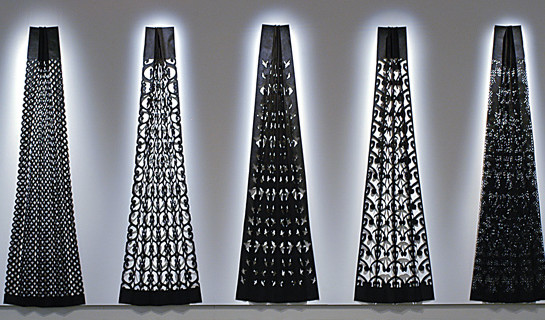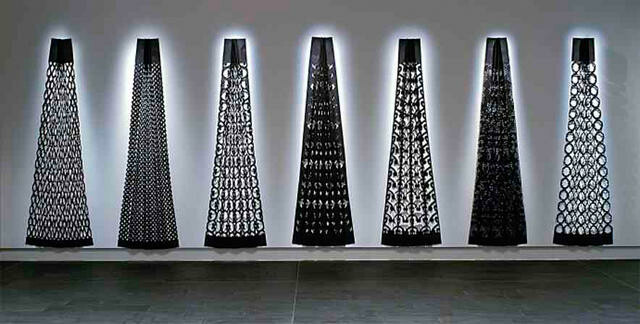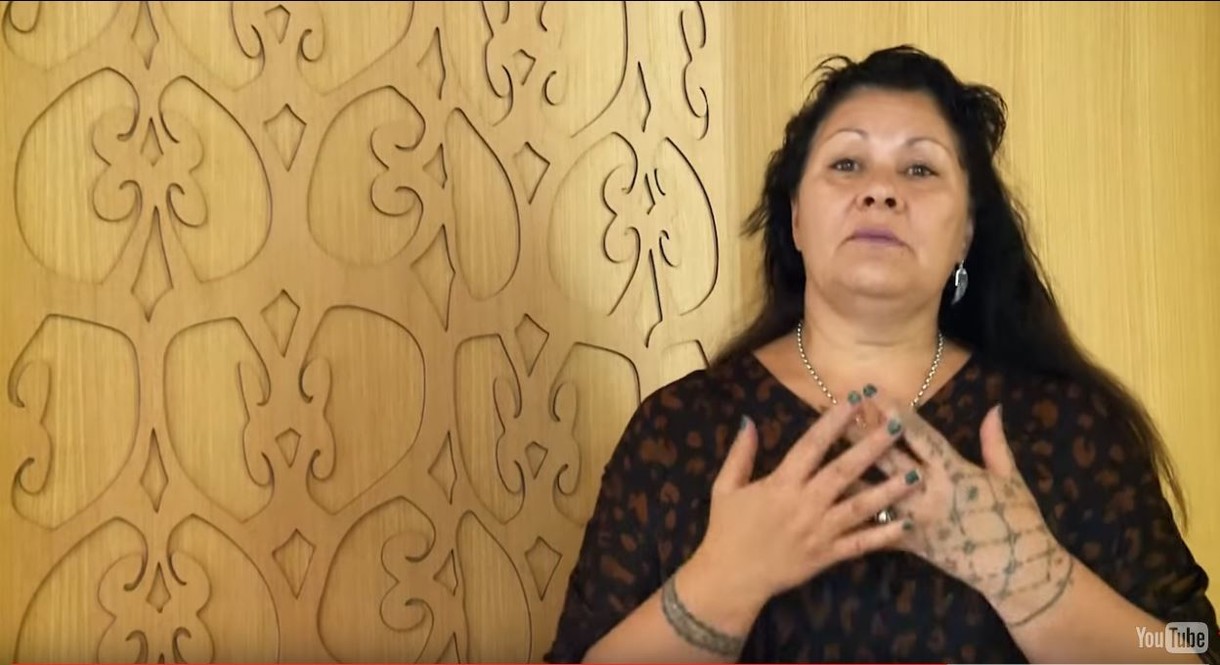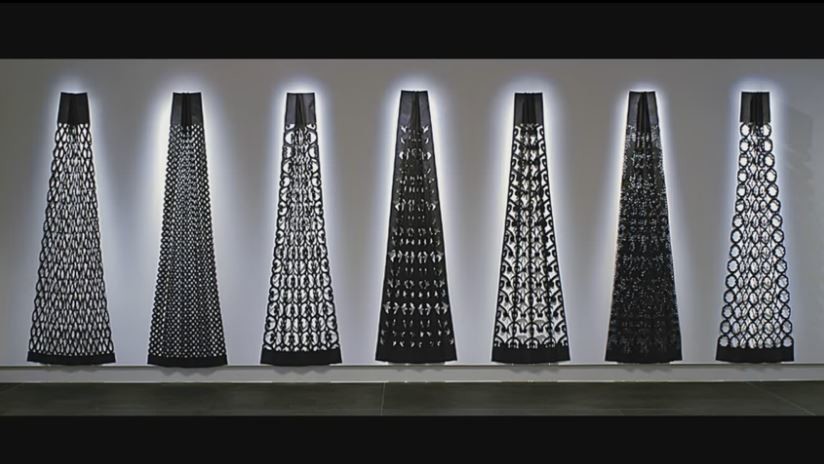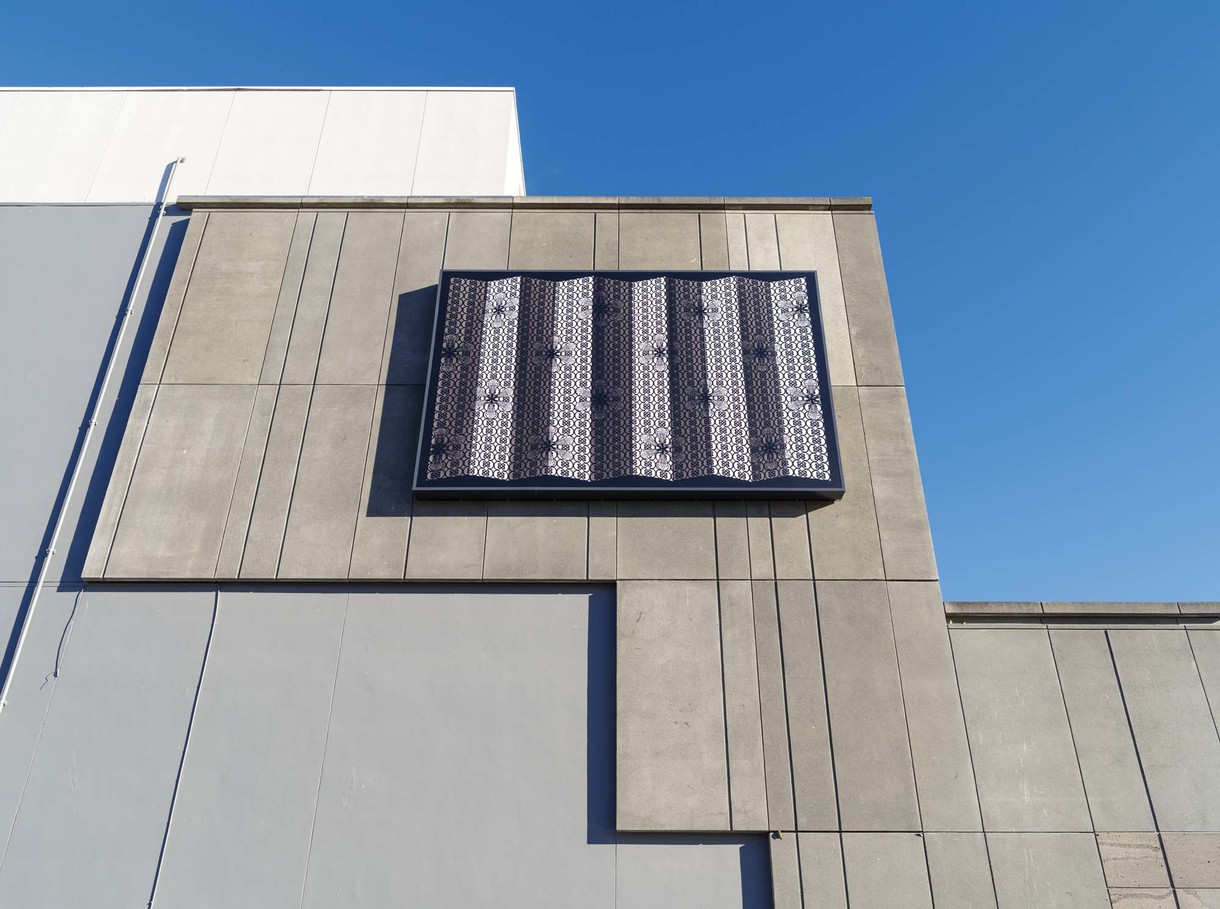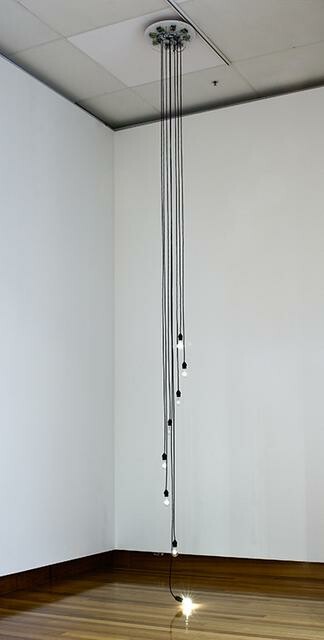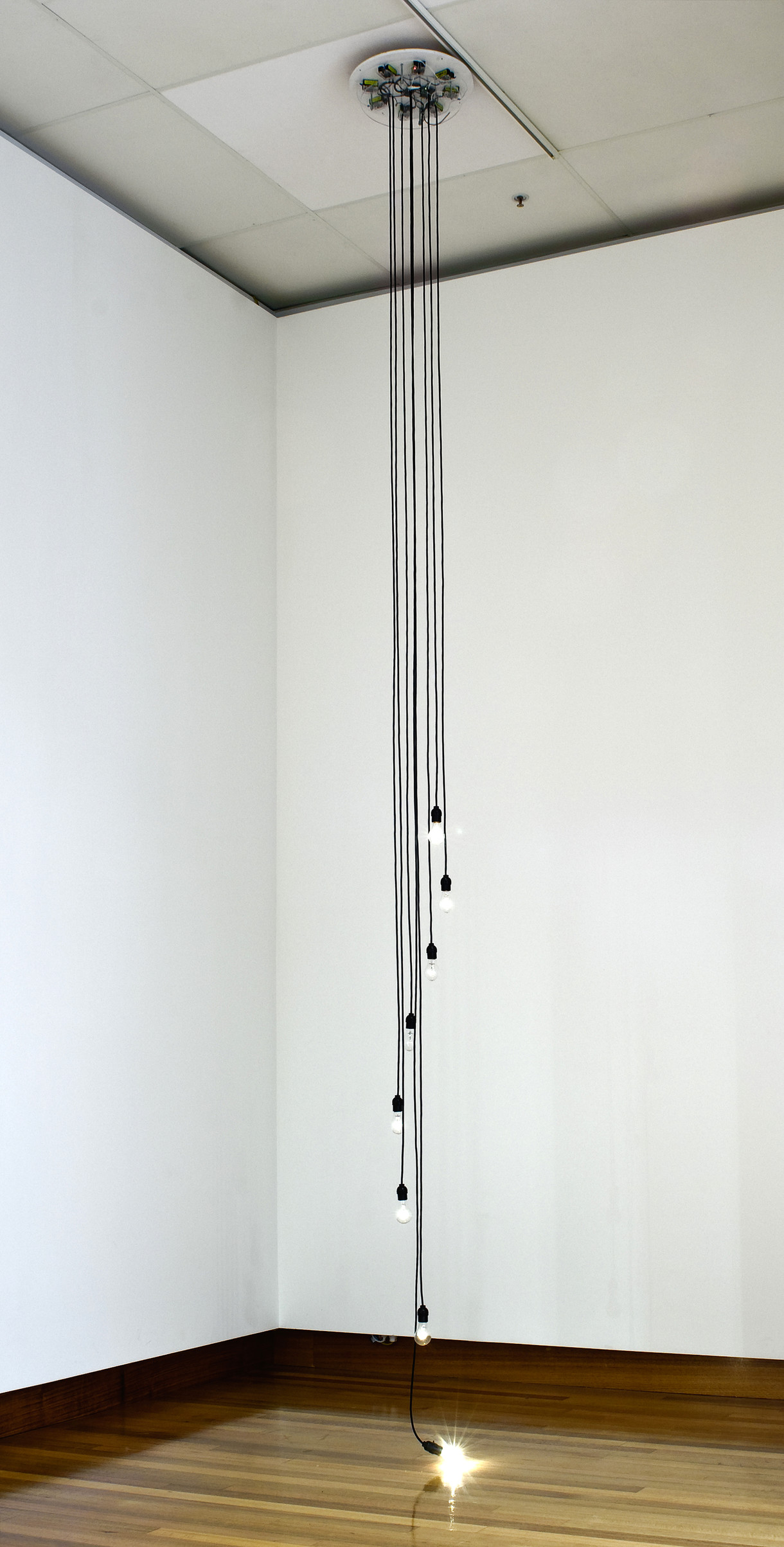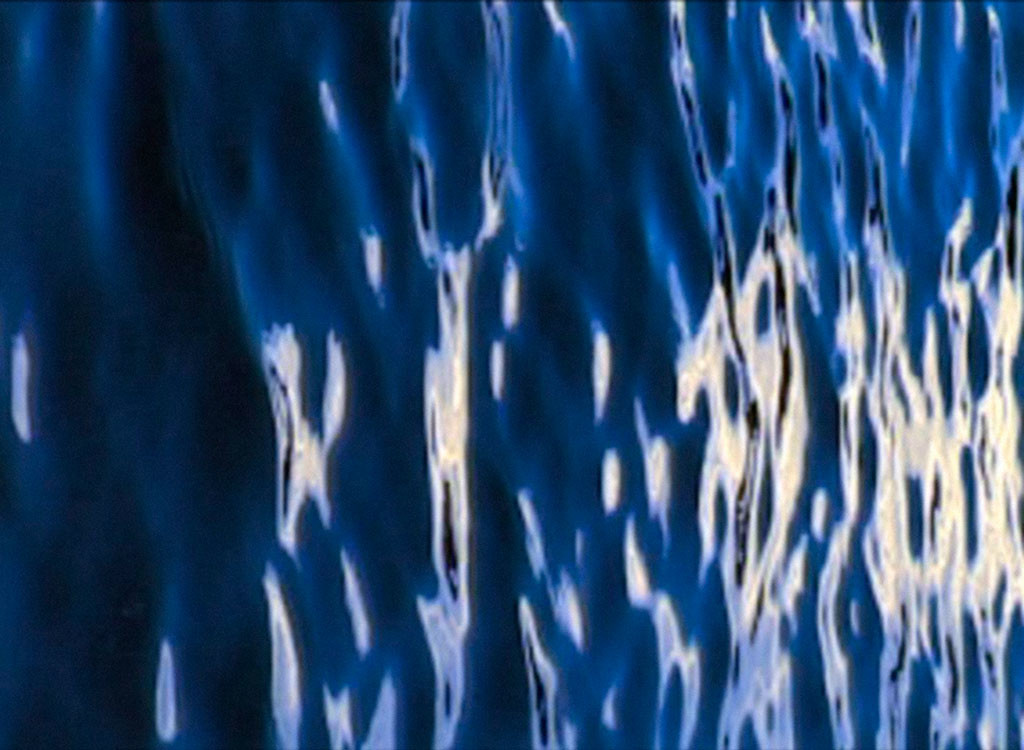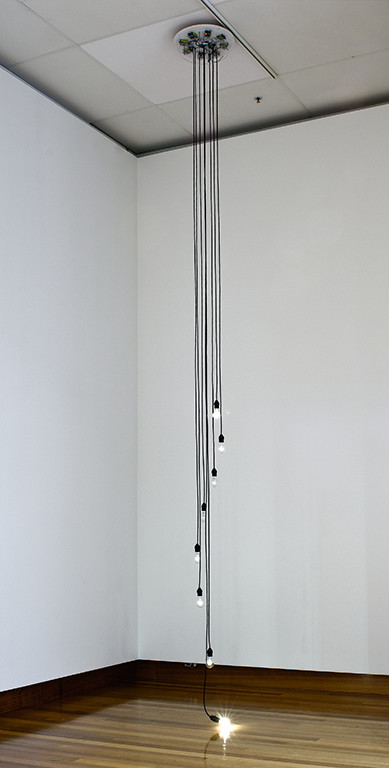Lonnie Hutchinson
Aotearoa New Zealand, b.1963
Ngāti Kuri,
Ngāi Tahu,
Sāmoan,
Māori,
Pasifika,
Scottish,
English
Sista7
- 2003
- Black building paper
- Purchased 2003
- Reproduced with permission
- 2500 x 1000 x 100mm
- 2003/36.a-g
Tags: abstraction, mountains, patterns (design elements), triangles (polygons)
From her studio window in the port town of Ōhinehou / Lyttelton, Lonnie Hutchinson could see the volcanic range commonly known as the Seven Sisters running along the back of Ōhinetahi / Governors Bay. A pivotal work in the artist’s career, Sista7 celebrates this evening vista and the sense of belonging she felt nestled in the rohe (territory) of Ngāti Wheke, the hapū (subtribe) based at nearby Rāpaki. The spiritual and cultural values of Hutchinson’s dual Samoan and Ngāi Tahu heritage are firmly embedded in her practice. Hand-cut in black builder’s paper, positive and negative elements recall the fundamentals of Polynesian and Māori design. The rhythm of folds and the elegant shadows cast by the motifs inspire a natural sense of wonder.
(Te Wheke, 2020)
Please note that the dimensions given above are for one of this work's seven individual parts. The spacing between each part, and thus the width of the entire work, can vary. In this image from the exhibition Te Puāwai o Ngāi Tahu (10 May – 24 August 2003), the parts are installed 300mm apart.
The title of this work is written as Sista7, rather than Sista 7.
Exhibition History
Brought to Light, November 2009
The Seven Sisters are prominent peaks on the undulating wall of the volcanic crater that forms Lyttelton Harbour. This wall – a geographical feature known generically as a ‘caldera’ because of its resemblance to a Spanish cauldron, or cooking pot – dominated the view from the studio in which Lonnie Hutchinson worked when she made this work. Sista7 is Hutchinson’s personal response to the mass and grandeur of this natural landscape – ‘my story, my myth’. Cut from building paper, the delicate, interlaced patterns envelop the ancient and solid mountain forms like mists.
Created especially for ‘Te Puawai o Ngai Tahu’, sista7 emerged out of Lonnie Hutchinson’s lifelong fascination with stories- those legends and myths through which we come to understand communities and cultures. Her subject in this work is a group of prominent peaks on the undulating wall of the volcanic crater that forms Lyttelton Harbour. This wall, known generically as ‘caldera’ because of its resemblance to a Spanish cauldron, or cooking pot, dominates the view from Hutchinson’s Lyttelton studio. Originally called ‘the seven brothers’, the peaks are now referred to as ‘the seven sleepers’ or ‘the seven sisters’. Hutchinson considers this last depiction especially appropriate, given thier monumental, almost magical, beauty; “I feel passionately fortunate that I make art in such an environment. For me this is a spiritual journey of returning to the landscape of my tipuna (ancestors).”
In previous works, Hutchinson has used building paper to combine a personal, often lyrical, narrative with a response to the order and mass of architecture. In sista7, the thick black paper, falling in monumetal folds to the floor, emphasises the structural qualities of the natural landsape. The work represents Hutchinson’s own response to the Seven Sleepers - ‘my story, my myth’ - counter-pointing their sense of massive, ancient solidity with delicate, lace-like patterns that envelop the paper folds like wraith-like mists: fragile-looking, but strong; beautiful, but mysterious; grand, but intimate. “Much like my view.” (Contemporary collections hang, 2008)


